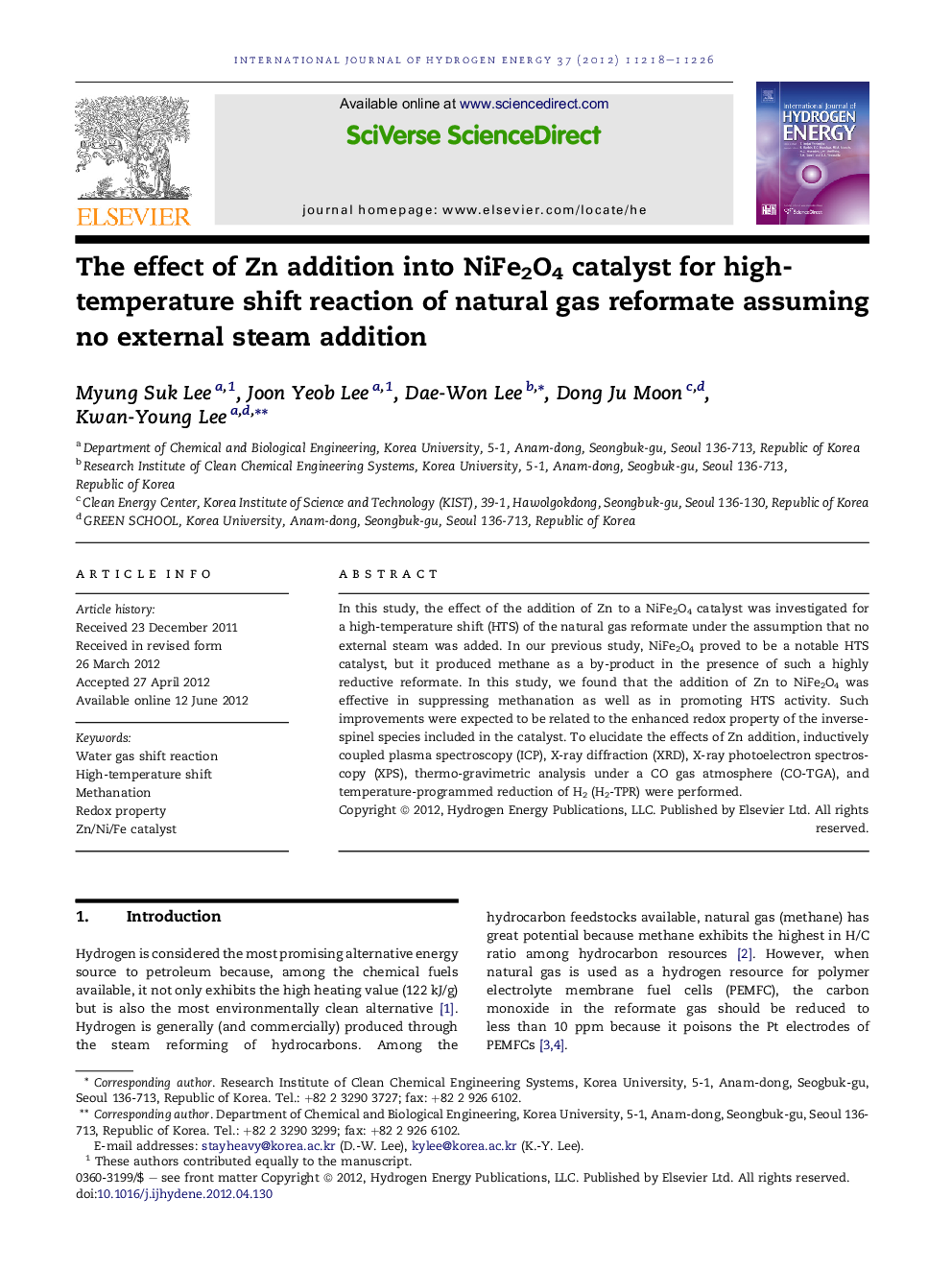| Article ID | Journal | Published Year | Pages | File Type |
|---|---|---|---|---|
| 1276285 | International Journal of Hydrogen Energy | 2012 | 9 Pages |
In this study, the effect of the addition of Zn to a NiFe2O4 catalyst was investigated for a high-temperature shift (HTS) of the natural gas reformate under the assumption that no external steam was added. In our previous study, NiFe2O4 proved to be a notable HTS catalyst, but it produced methane as a by-product in the presence of such a highly reductive reformate. In this study, we found that the addition of Zn to NiFe2O4 was effective in suppressing methanation as well as in promoting HTS activity. Such improvements were expected to be related to the enhanced redox property of the inverse-spinel species included in the catalyst. To elucidate the effects of Zn addition, inductively coupled plasma spectroscopy (ICP), X-ray diffraction (XRD), X-ray photoelectron spectroscopy (XPS), thermo-gravimetric analysis under a CO gas atmosphere (CO-TGA), and temperature-programmed reduction of H2 (H2-TPR) were performed.
Graphical abstractFigure optionsDownload full-size imageDownload as PowerPoint slideHighlights► Zn/Ni/Fe was active in highly reductive conditions of R = 2. ► Zn/Ni/Fe showed high HTS activity with suppressing methanation compared to Ni/Fe. ► Zn/Ni/Fe contained inverse-spinel (Zn,Ni)Fe2O4 as an active species. ► (Zn,Ni)Fe2O4 proved to have improved reducibility compared to NiFe2O4.
